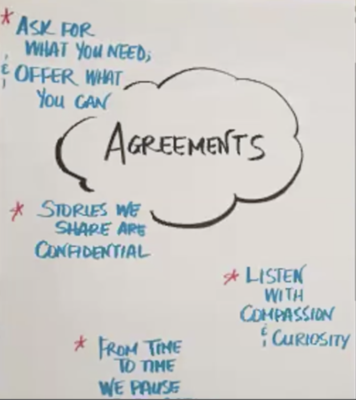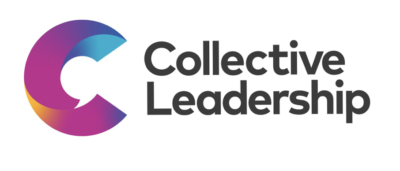
One of the things that I most like about teaching / offering a 4-week class on The Circle Way, Nuancing The Components Wheel, is that it’s not just offering the nuances “out there” to others. It’s also getting very moved by nuance in my understanding and practice. So glad for Amanda Fenton, co-teacher and co-host for this one. So glad for the people that show up to the class — for their practice, learning, curiosity, and playful presence.
Some of that nuancing for me this time is with The Circle Way Agreements. I’m aware that “Agreements” is a term that requires some attention and doesn’t mean the same thing to everyone. Is it “consensus?” Is it a “vote?” Is it “guidelines” for helpful and shared space holding? I’ve worked all of those layers before, depending on the setting. For this post, I’m not trying to sort through the process differences. I am sorting through some of the nuancing that is awakening in me from this class on offering nuances.
Ask for what you need: offer what you can. — My nuancing for this is, “Be willing to make visible what you need so that the group might adapt or adjust together, in the name of shared healthy tending. Offer what you can in support of the well-being of the group in such expressed needs.” This guideline isn’t a promise to fulfill every need. It’s not placing an order at a restaurant to be fulfilled with expediency. It’s invitation for shared tending.
Stories we share are confidential. — I’ve always felt that learning in a circle is and should be portable. Anonymized, of course. Or, carried with permission from the story teller, of course. Or universalized to principle rather than the story details. My nuancing here comes more from images. If I saw flowers growing in your garden, as much as I enjoy the flowers, I wouldn’t presume that its ok for me to dig them up and plant them in my garden. Stories, like flowers, belong in the story-garden of the person who shared them.
Listen with compassion and curiosity. — I love the invitation to be curious here. Lately, my nuancing has been to invite “curiosity” as a kind of connective tissue among us. When a compassionate curiosity is present, with others and with self, it’s like having good soil from which we can grow many good things in a shared garden. Compassion and curiosity are a kind of compost.
From time to time, we pause. — The nuancing for me is that “pause” is about welcoming silence as a participant. It’s about knowing that there will be moments of integration, when there are no words. It’s about everyone being able to request when pause is helpful. Pause is about orienting attention to the center and all that is moving in it (insights, questions, wonders, ahas, challenges). Pause is about honoring lots of kinds of knowing, and welcoming that in moments of silence.
So glad to be nuanced. It is one of the basic ways that I orient to the journey that is practicing circle, and for that matter, the journey that is life. So glad to be in nuancing with a community that wants to learn and offer such things. With agreements. And with a lot of other juicy bits.





